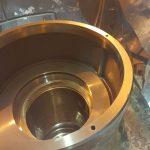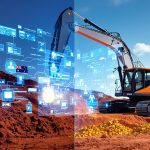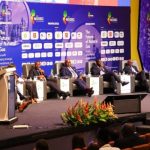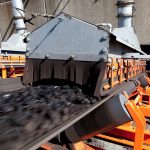Africa’s Copperbelt, spanning Zambia and the Democratic Republic of Congo, is no stranger to the world of mineral extraction. This region alone generated an impressive 73% of the global cobalt supply in 2022, as reported by the Cobalt Institute.
This intense mining activity, driven in part by the increasing demand for lithium-ion batteries, which are a mainstay in modern electric vehicles, laptops, and smartphones, has raised concerns about the environmental and health impacts on nearby communities.
A recent study by the National Center for Atmospheric Research (NCAR) offers a new way to monitor these impacts remotely. This research reveals that satellites can detect and quantify the emissions from mining operations in this region.
Mining satellite data for emissions
The Copperbelt’s mining surge presents challenges in monitoring. Ground-based monitoring in the region is sporadic, and reports from mine operators are often inconsistent, if not entirely missing. This backdrop set the stage for NCAR’s research, aimed at identifying an alternative way to gauge the mining industry’s ecological footprint.
javascript:false
Leveraging data from the TROPOspheric Monitoring Instrument (TROPOMI) aboard the European Space Agency’s Copernicus Sentinel-5 Precursor satellite (S-5P), researchers honed in on nitrogen dioxide emissions, a primary component of smog.
Nitrogen dioxide is generated from various sources, including biomass burning, urban activities, and certain natural processes. However, a significant proportion in the Copperbelt comes from the burning of diesel fuel, a mainstay in copper and cobalt mining operations.
The satellite data showed distinct patterns of emissions corresponding to individual copper and cobalt mines. Interestingly, these emission levels had a strong correlation with the annual metal production of the mines, validating the satellite’s accuracy in monitoring activities on the ground.
Implications and applications
The potential implications of this research extend beyond the Copperbelt. “Mining operations can profoundly impact the quality of life for adjacent communities,” explains Pieternel Levelt, the senior author of the paper.
Using satellite technology to monitor such regions can yield insights into the environmental consequences of mining and also serve as a tool for estimating the growth of such activities in remote regions, which might otherwise be underreported or unmonitored.
In the context of the Copperbelt, understanding emissions is crucial, especially given the proximity of mining activities to populated centers. As NCAR scientist and study lead author Sara Martínez-Alonso notes, the satellite observations enabled researchers to not only quantify emissions but also put them in context for the affected regions.
Future of monitoring emissions from satellites
While the S-5P satellite’s once-a-day pass over the Copperbelt provided invaluable data, more comprehensive monitoring is possible. A geostationary satellite, which remains fixed over a specific location, could offer hourly updates on emission levels, thereby painting a much clearer picture of pollution patterns and sources.
Currently, such satellites do not cover Africa or any other region in the global South. Yet, the implementation of such satellites could revolutionize air quality forecasting and provide vital information to local regulatory agencies, according to Levelt.
The intersection of technology and environmental monitoring is proving to be a potent tool in the quest to understand and mitigate the impacts of human activities on the planet. As the global demand for resources like cobalt continues to rise, utilizing advanced methods like satellite monitoring becomes not just advantageous, but imperative.
The findings from NCAR’s research in Africa’s Copperbelt serve as a testament to the possibilities that lie ahead in environmental stewardship and sustainable growth.















